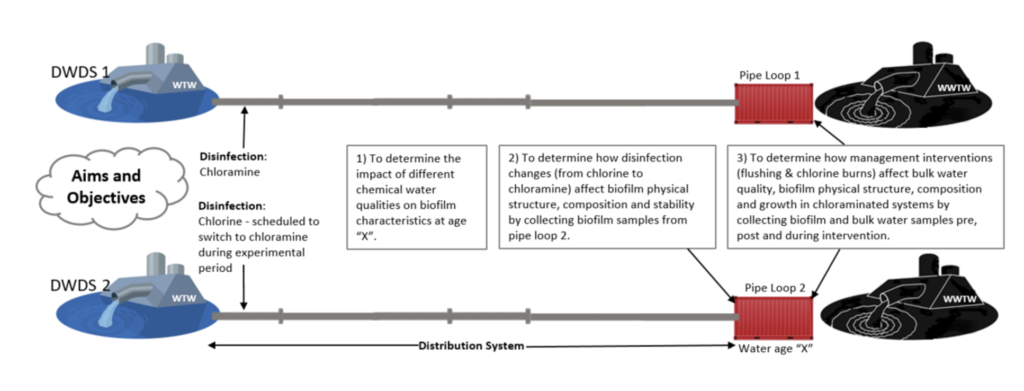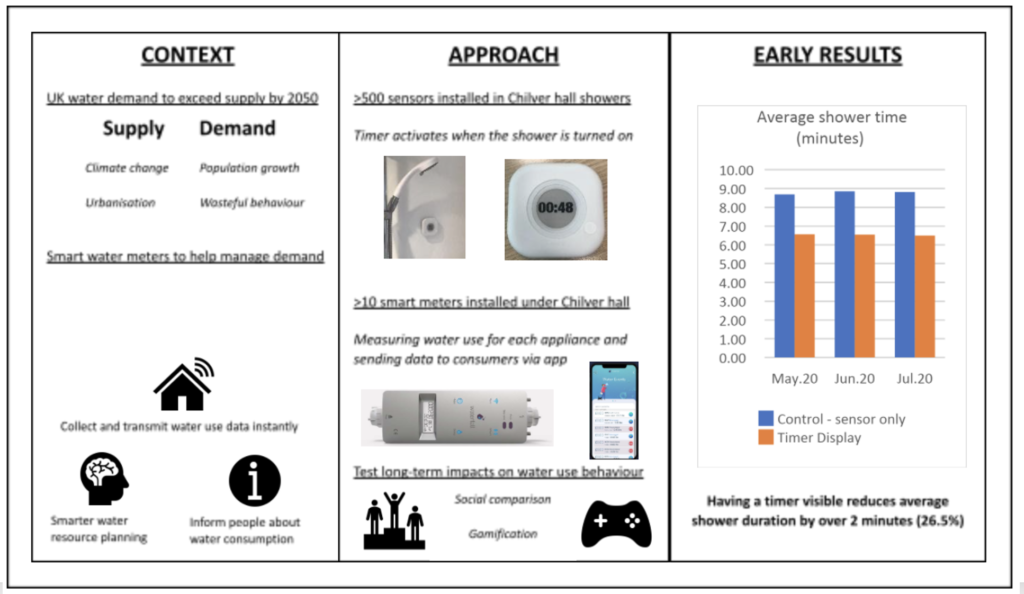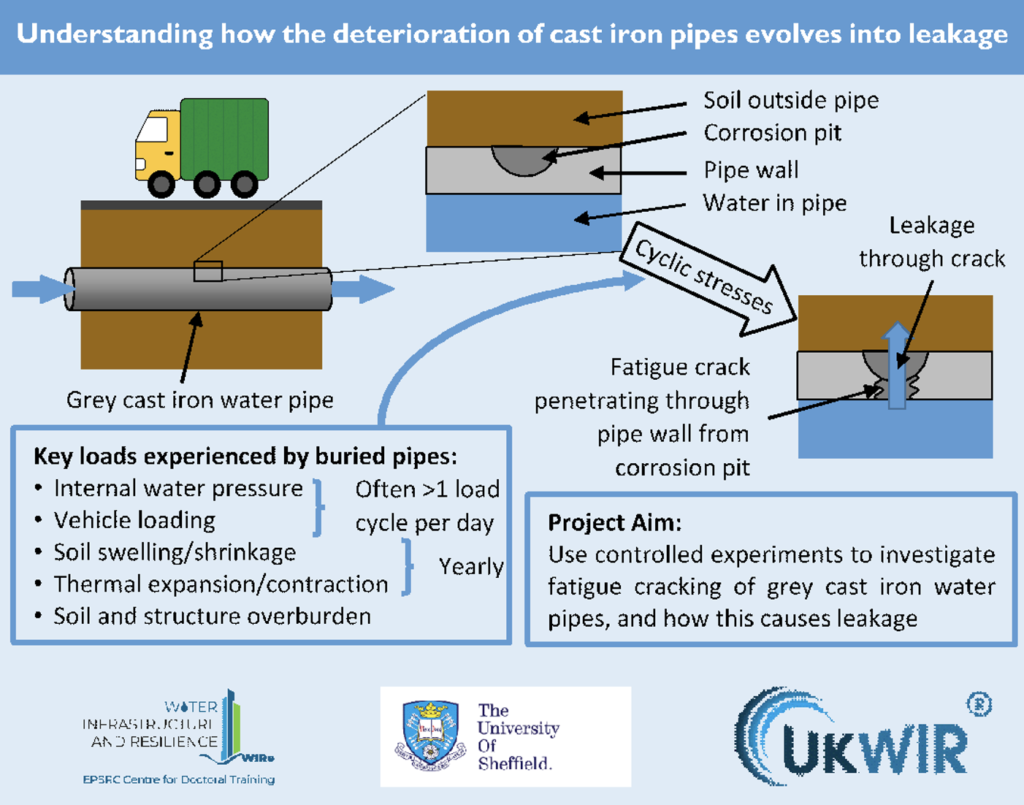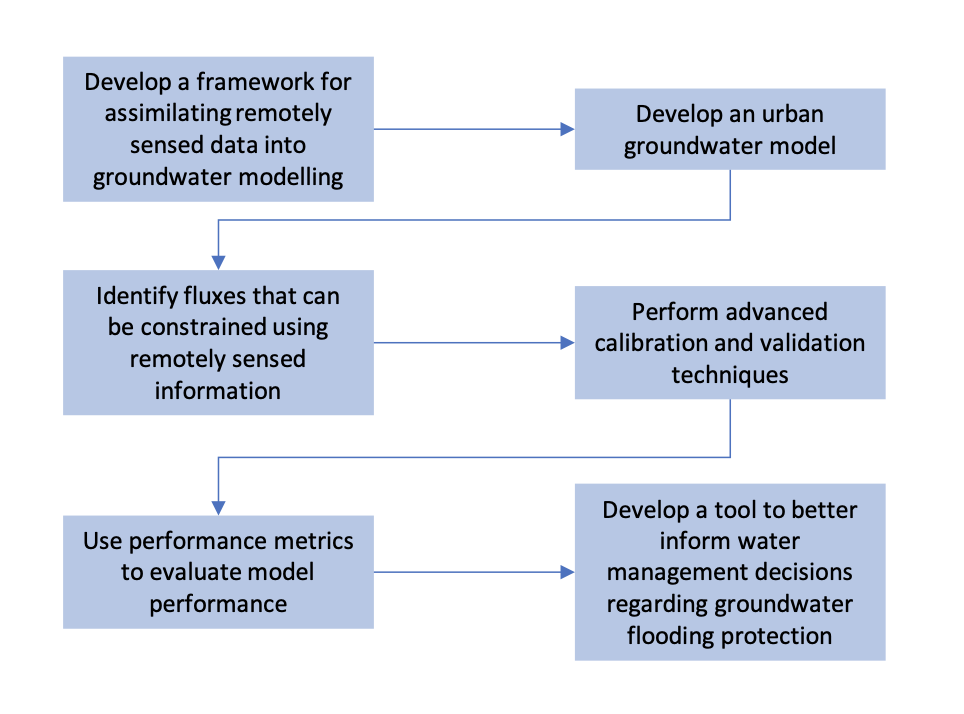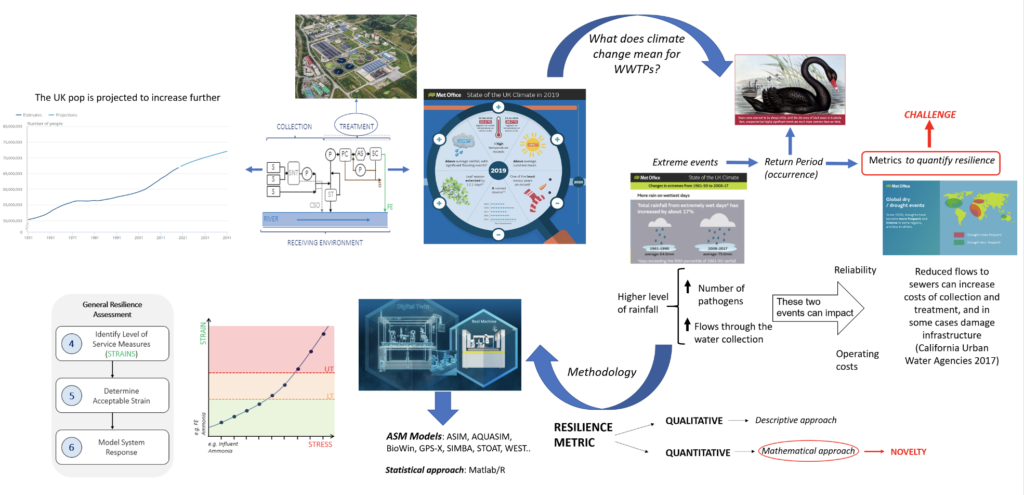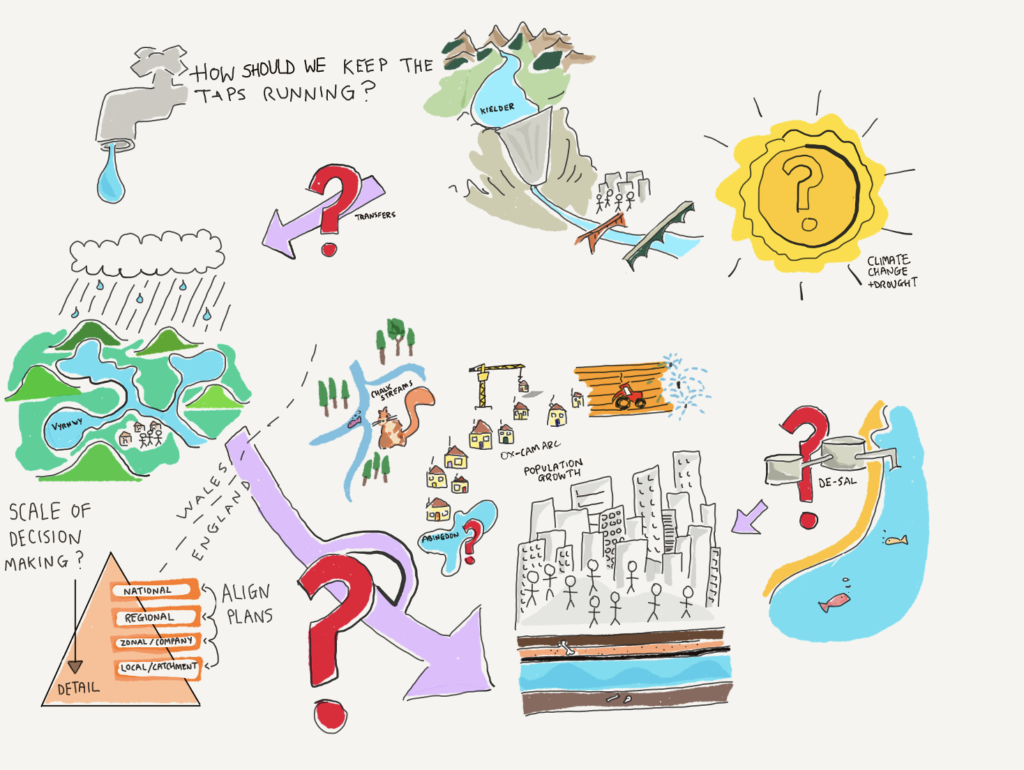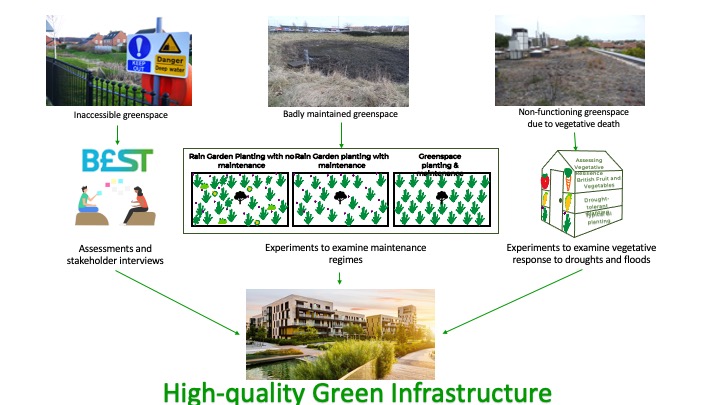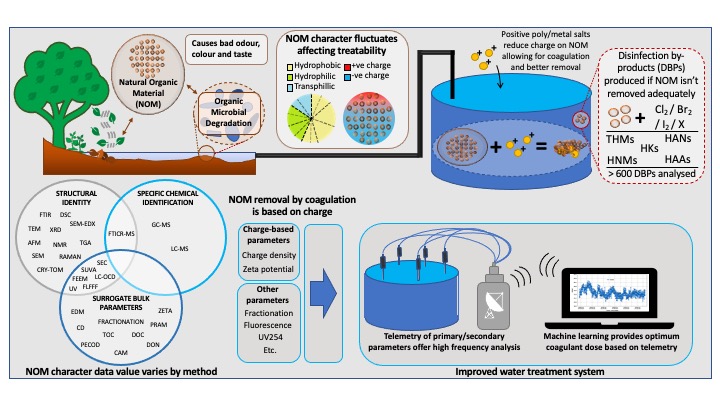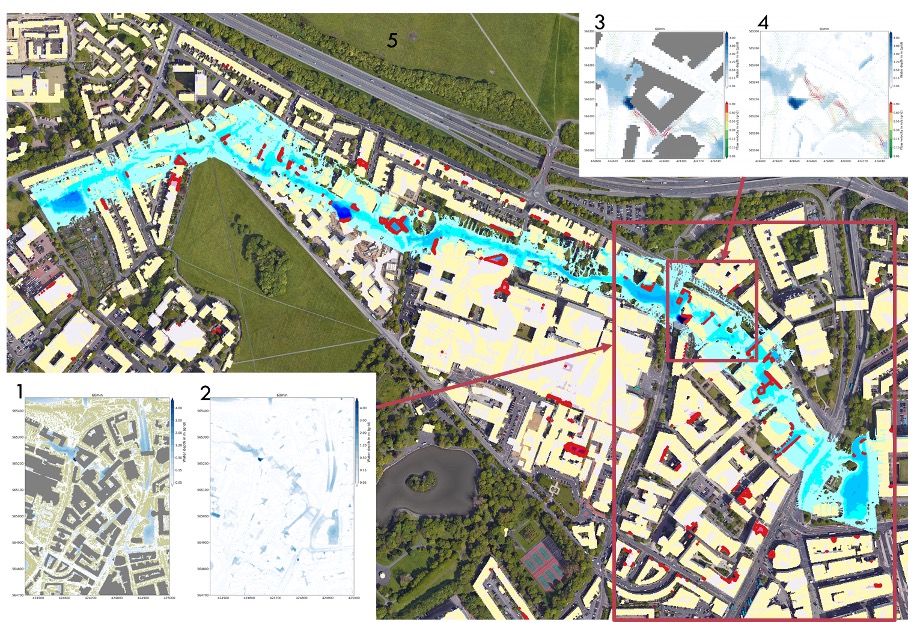Meet Jade Rogers
Email: Jcrogers1@sheffield.ac.uk
Academic and Industrial affiliations: The University of Sheffield, Scottish Water
Title of research project: Managing biofilms and disinfection residuals to protect drinking water safety

Disinfection residuals are common place in UK drinking water distribution systems (DWDS), used to control microbiological degradation of drinking water. Water utilities are increasingly switching disinfection residuals from chlorine to chloramines in order to minimise the formation of regulated disinfection by-products (DBPs). This will affect DWDS biofilms (microbial communities present at the pipe wall) and bulk water chemical interactions, potentially leading to adverse water quality impacts such as discolouration and nitrification. The interactions between biofilms, bulk water chemistry and physical disturbances are poorly understood in regards to disinfection changes, yet such understanding is essential to improve DWDS management and asset performance. This project aims to determine how disinfection residuals, in particular, chloramination can be better managed to reduce adverse water quality impacts. Critically, the project will consider chemical, physical and biological processes in combination, through the use of two pipe loops located in the DWDS, to understand the uncertain impacts of chloramination upon biofilm structure and behaviour, such as growth rates and bulk water quality exchanges.
